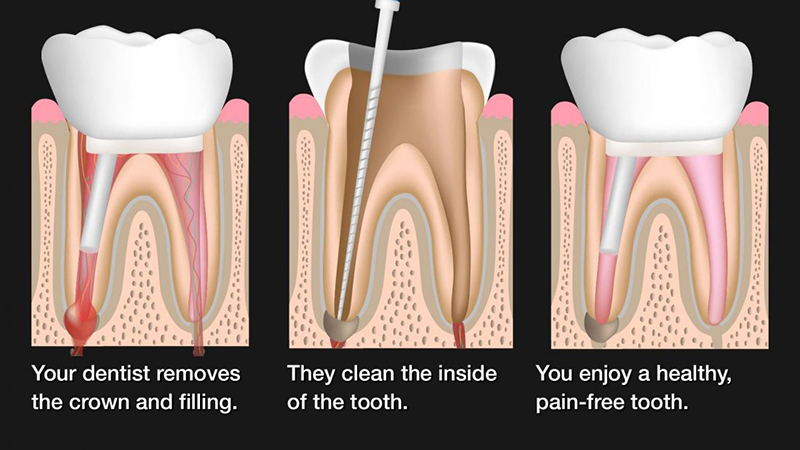Important points about Dental Root Canal with a Crown
After a root canal, a dental crown is often placed over the tooth. The crown’s function is to guard against injury and infection to the tooth and root. However, rather than using a crown, a tooth may occasionally be cemented with a filling following a root canal.
Without a crown, will the tooth last as long? Is it preferable to have a root canal and then have a crown placed over the tooth? Find out the responses to these and other queries.
A root canal: what is it?
A tooth that is at danger of infection can be treated with a root canal. To get rid of sick tissue or stop an infection from growing because of a deep cavity or a fractured tooth, the dental pulp is removed. After cleaning and flushing the root canal, an infection-resistant replacement material is inserted. After a root canal, the tooth may occasionally be covered with a dental crown, and other times it will be sealed with a filling.
A dental crown: what is it?
A dental crown is a covering for a tooth that resembles a tooth. Porcelain can be used to mimic natural tooth enamel, or different metals might be used for strength or to create a particular style for a crown. The tooth is filed down to a smaller size in preparation for the crown, which covers the remaining tooth and root structure.

Average Dental Life Expectancy Following a Root Canal
A crownless period: 1–5 years. In many circumstances, a tooth that has had a root canal and is sealed with a filling may only endure for five years. A tooth may survive longer with merely a filling if proper care and dental hygiene are followed, but there is a chance of reinfection or tooth damage.
Years with a crown: 15–20. After a root canal, a crown provides superior strength and protection, extending the tooth’s life in its repaired state far longer than it would have otherwise.
Crown vs. Filling: Things to Think About
Where and what kind of tooth it is. After a root canal, a front tooth may have a longer lifespan with simply a filling. However, a crown could be necessary to provide enough protection for a molar that takes the majority of the chewing action.
State of the tooth.
There might not be enough tooth material remaining for a filling if the tooth has significant decay or injury.
Filler substance.
After a root canal and the application of high-quality filling material, the tooth can be robust enough to not require a crown.
oral health.
A tooth without a crown may remain longer if you practice good dental hygiene, such as brushing and flossing twice a day.
dental attention. Every six months, you should schedule professional dental care to prolong the life of all of your teeth, including the ones that have received treatment.
Frequently Asked Questions Concerning Root Canals and Crowns
Following a root canal, should I receive a crown?
A crown may or may not be the best option for you, depending on the specifics of your case. Whichever would be best for your oral health is something you and your dentist can decide together.
What dangers come with not getting a crown?
Retrenchment may be necessary if you choose not to obtain a crown, or the tooth may become irreparably damaged.





